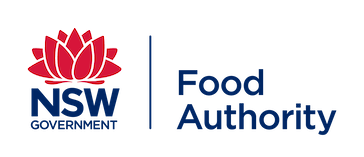kJ information (menu labelling)
In November 2010, the NSW Parliament passed legislation requiring larger retail food outlets to display nutrition information on menus at point-of-sale.
The policy initiative is part of the NSW Government’s broad set of responses to assist in reducing high rates of overweight and obesity in the community.
To assess the impacts and appropriateness of the initiative, the NSW Food Authority evaluated it from May 2011 to January 2013.
There are multiple public health initiatives and other factors outside of the Food Authority’s regulatory activities contributing towards the policy goal of reduced overweight and obesity. The Food Authority therefore used a tailored evaluation framework to focus the review on outcomes within its area of influence.
Outcomes identified for evaluation purposes were:
- businesses understand and comply with the regulatory requirements
- regulatory agencies manage and enforce the regulation
- the Food Authority implements a consumer education program
- consumers have information to make healthier choices at fast food and snack food chains
- consumers have awareness and increased knowledge of energy, particularly kilojoules (kJ) values displayed in qualifying outlets
- consumers purchase fewer kJ from qualifying outlets and/or adjust their kJ consumption at other meals during the day.
Activities used to help determine the effectiveness of the initiative’s implementation were:
- review of the issues raised by businesses about the regulation and the number resolved
- on-site inspections and % of businesses complying with requirements
- collection of qualitative and quantitative data from interviews with consumers to assess changes over time in understanding, use and acceptability of the labelling system
- collection of both qualitative and quantitative consumer data to estimate changes in actual food choice and nutrients purchased
- collection and laboratory analysis of kJ in food samples to verify the accuracy of kJ displayed on menus.
Findings
Overall, the desired outcomes were achieved:
- businesses understood and complied with the requirements. The majority of businesses implemented the requirements prior to them coming into effect
- the regulations were managed and enforced by regulatory agencies through on-site compliance checks and checks of on-line ordering sites and printed material. The level of compliance was high with only minor issues identified in most cases
- a consumer education program was implemented by the NSW Government using digital, social, ambient and radio media, instore materials and news editorial in broadcast and print media
- information for consumers to make healthier choices was available through the chains displaying kJ information on their menu, some chains preparing their own materials consistent with the education campaign as well as the consumer education campaign itself
- the campaign exceeded its digital, media and most of its awareness targets
- consumers were more aware of daily energy intake and more able to nominate the correct average daily energy intake over the survey period. Understanding of kJ did not change significantly however
- Consumers appeared to be purchasing fewer kJ with a 15% decrease in the average kJ value of a meal purchased over the survey period.
These achievements demonstrate that the initiative was implemented well by industry and regulators. Consumers are noticing the new information at outlets with a positive shift in consumers understanding of the average daily energy intake and some reduction in the kJ purchased.
Details of the evaluation are available in:
- Evaluation of kilojoule menu labelling, July 2013 (pdf 1MB, 40pp)
 Table of contents
Table of contents
Summary
Introduction
Rationale for evaluating the initiative
Evaluation objectives and design
Data collection methodology
Evaluation results
Discussion
Conclusions
References
Appendices
- Fast Choices: An evaluation of energy purchased and consumer information, January 2013, TNS Social Research,. (pdf 3.46 MB, 64pp)
